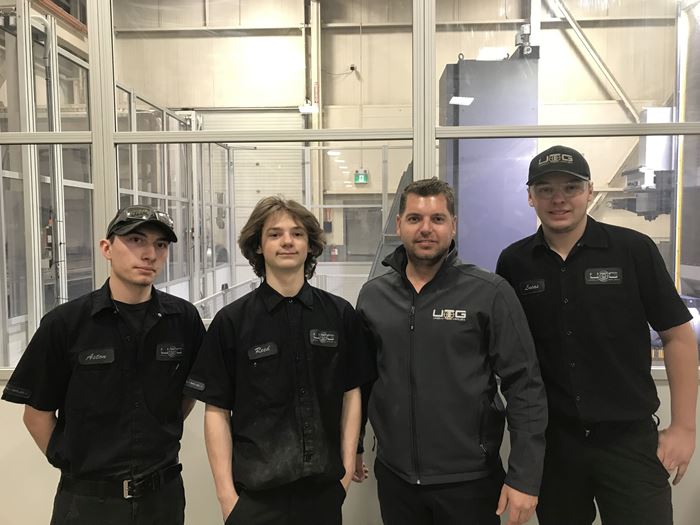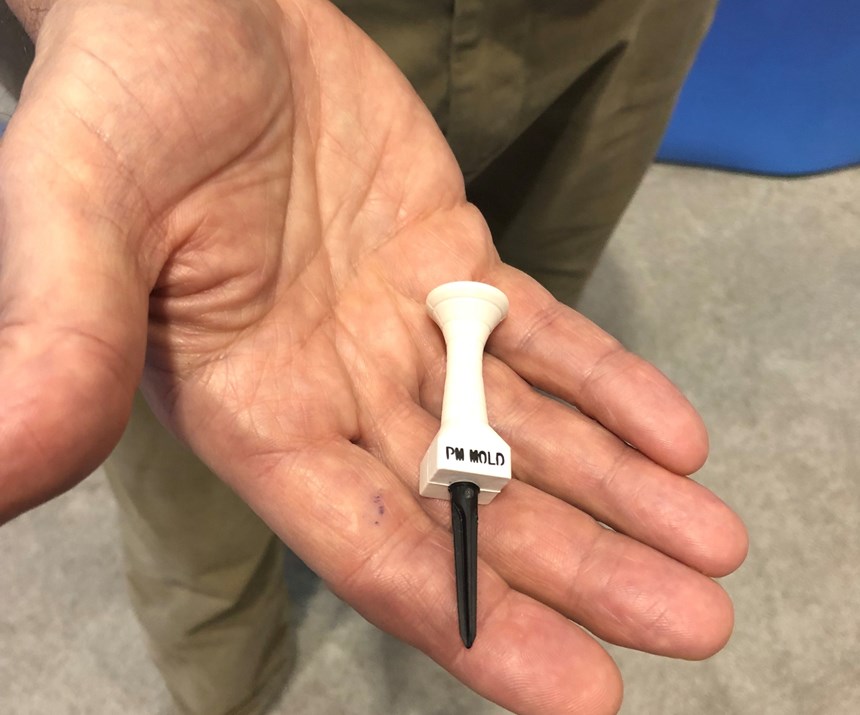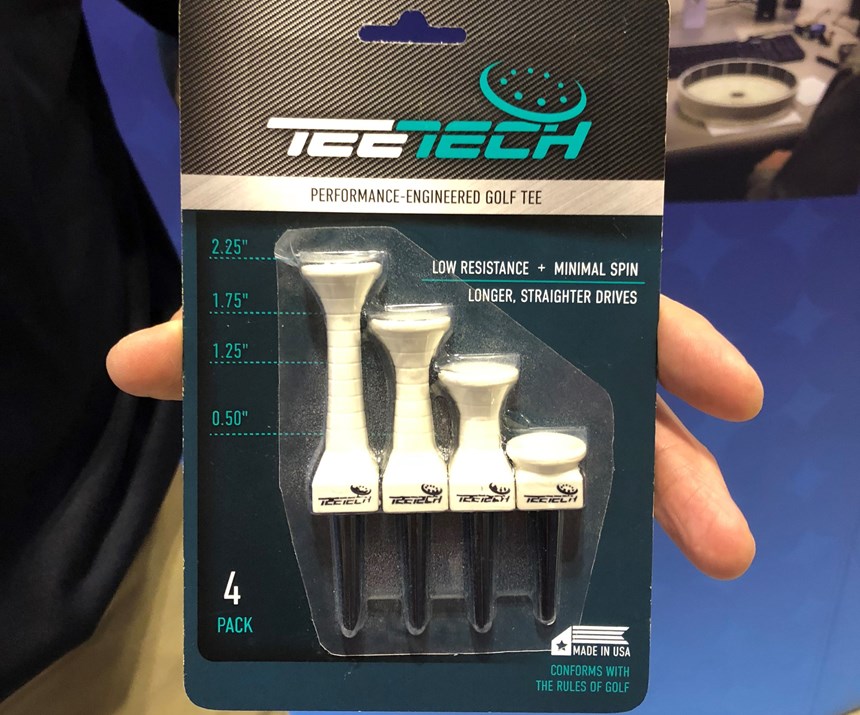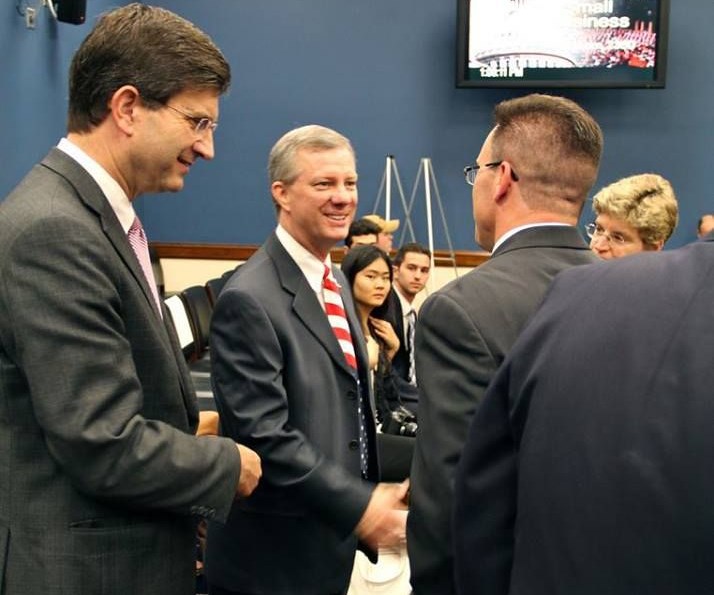MoldMaking Technology continues its coverage on a variety of workforce development programs in North America. In this installment, a Canadian shop and a U.S. shop share their unique approaches to building a skilled workforce.
An Architect’s Approach to Workforce Development
Unique Tool and Gauge (Windsor, Ontario, Canada) is fully dedicated to workforce development and has been for many years. Seven years ago, the company hired Chad Thomas as its human resources manager, and Thomas has since stepped up Unique’s game when it comes to recruitment and training.
Unique Tool and Gauge was founded in 1982 to build molds for the automotive industry. The company specializes in manufacturing very large, high-volume production injection molds in both tool steels and hybrid aluminum materials, the latter of which the company says it helped pioneer in the automotive sector. With 85 employees working within a 60,000-square-foot facility, moldmakers make up 50 percent of Unique’s current workforce, and the company is growing.
“The recession in 2009 saw many moldmakers leave to work in the oil industry in Alberta, never to return. It was becoming harder and harder to recruit young people into moldmaking, and we got tired of the usual ‘poaching,’ then training the recruit only to see them leave,” Thomas says. “The stereotypes about manufacturing jobs still exist, but the government is trying to emphasize career opportunities in manufacturing, and it is getting better.” As a result, he became the architect of a new, comprehensive, in-house workforce development program that, timing-wise, works in step with the Greater Essex County District School Board’s Ontario Youth Apprentice Program (OYAP). OYAP is a school-to-work program that provides eleventh- and twelfth-grade students with a pathway to learn about and work in apprenticeship occupations, like moldmaking and more than 150 other skilled trades. Unique’s program also includes a partnership with the Dual Credit Program offered at St. Clair College for students in its General Machinist program.
Having a full-time trainer is key. It differentiates Unique’s program from every other training program.
Another key move Thomas made was to hire a full-time trainer to lead the new program. “Having a full-time trainer is key. It differentiates Unique’s program from every other training program. We no longer rely on lead employees who are limited on time to teach because of regular work,” he says, adding that “no other company has taken more OYAP students on board than we have.” Over the last ten years, Unique has trained more than 71 apprentices at its facility. The average age of employees at Unique is between 36 and 40 years old.
Immersion Training
While Thomas continues to represent Unique by giving presentations about careers in moldmaking at local high schools and colleges to generate possible candidates (the program is open to anyone who would like to apply), most apprentices are recruited by Unique in the eleventh grade, through OYAP’s one-year paid co-op placement program. “During the interview process, I am looking for many types of qualities, like their initial greeting, their clothing selection for an interview, what questions they ask, how mature they are and what they know about us as a company,” Thomas says. He also learns what mechanical knowledge a candidate has and whether they liked taking things apart and reassembling them when they were growing up. “I like to ask them what they think an employer would expect of a new employee because that helps us set expectations for them.” After being interviewed, seven or eight students are chosen among many applicants who have taken shop classes to learn some basic skills. Trainees are hired to work at Unique for a year, like being on sabbatical from school. The program begins the first week of February each year.
Unique’s training program is highly structured and condenses the typical three-year apprentice training down to one year. This is possible because Unique has a master moldmaker, Bob Clifford, whose only job is to train recruits in all areas of moldmaking. Thomas says Clifford was an instructor in the past and joined the team at Unique almost four years ago. “With Bob leading them, the students are immersed in all areas of moldmaking. While I developed the training program, Bob’s fingerprint is definitely on it. He has to execute and own the program, and his experience as a trainer ensures its success.”
The first three months of training is dedicated to learning all the foundational elements to moldmaking, like shop safety and machining fundamentals including drilling holes, chamfering, and so on (on manual and machine-directed equipment), how to use calipers and other measurement devices, moldmaking terminology and so on. Thomas meets weekly with Clifford and daily with the apprentices to track progress throughout the year.
“The current group of trainees is exceptional, though there really have not been any that have disappointed in the past,” Clifford says. “But these are smart kids, and they are going to see laser welding and waterjets; they are going to see handwork (though we have gone from having 15 handmen down to two because the machines are cutting closer). Who better to adapt to new technologies than these young kids?” Clifford says he enjoys working with young people because they have more fun. He also likes to challenge them by giving them individual projects that make them use their heads before hands to figure out the best approach for completing them. “I had one guy who was a troublemaker — like a bull in a china shop,” Clifford relates. “I told him that I was going to prove that he’s the number one trainee, and I gave him a work order for a repair job on a big chair mold. These molds come in so dirty and filthy that they used to put beeswax on them to release the plastic that’s caked on. I told him, if he’s got a problem, he should come to me and say, ‘here’s how I would do it, what do you think?’ We would talk back and forth like that until one day, he came to me and said, ‘what if we do it this way?’ He had seen what others were doing and came up with a better way, and it changed the way we did things.”
After the initial three months, the apprentices go on an eight-month rotation that includes about 15 percent design and engineering training, 25 percent CNC machining instruction, 20 percent EDM training and 40 percent moldmaking instruction, Thomas says. “Throughout the year, these high-school kids are full-time employees making CAD$30,000 before taxes and gaining skills and potential for a career in moldmaking.”
Students who successfully complete the year at Unique return to school to complete required high school courses before graduating with offers to join the team at Unique Tool and Gauge. “Of the apprentices that we bring in each February, we keep roughly 40 percent,” Thomas says. His goal is to recruit enough young people that Unique can fill all required positions for two shifts. “We are hoping to bring as many as three groups of trainees through our program in the next two years, with a new group starting in November. That way, in two to three years or so, the company will reach the level of productive, full-time employees that we need. After that, we hope to eventually become a resource for other Canadian shops once we are fully staffed.”
Driving Workforce Development Through Real-World Product Development
At PM Mold Co. (Schaumburg, Illinois), apprenticeship kicks off with the driving core of any moldmaking project: product design and development. According to Tom White, vice president of operations and business development, it all began as the company began preparing to exhibit at the National Plastics Exposition (NPE) in 2012. “We were discussing giveaways and decided to focus on an item that showcased our two-shot capabilities and included our logo,” he says. “Everybody loves a golf game, so we decided to make a two-shot golf tee. You don’t see many like that on the market.”
White says that the mold for the tee was built by their apprentices at the time and designed by the company’s young engineers. “During the design phase I told them to go out and look at golf tees currently on the market and if they see anything that interests them, even if it’s a gimmicky item, to buy it (they were reimbursed) and we will use it to help spark some creativity for what we are trying to do,” he says. The apprentices examined the products they found and listed the features and functions they liked and disliked. White then asked them to brainstorm how they could incorporate the benefits of the other products into the new golf tee, while eliminating any of the negatives to develop a better golf tee. “We are providing a springboard to innovation.
We were kind of our own customer, and we worked through all aspects of our company to do for ourselves what we do for others.
“The first tee we made was red, white and blue. We put them in a fish bowl in our booth and gave them away. Then a gentleman who worked at a major golf component supplier stopped by our booth and asked about the tee,” White says. “He liked the bigger head and said it was the first time he’d seen a tee like that, and he explained how there is a scientific setup with having this bigger head that reduces side spin on the ball.”
PM Mold’s team, including the apprentices, began working with the gentleman to further develop the size of the tee and the eighty dimples in its cradle that prop up the ball and reduce friction yet put just the right amount of pressure to reduce top spin. “The project made up about five to ten percent of the apprentices’ training, depending on where we were with the project,” White says. “It was definitely a hands-on learning experience, as they were involved with part design concepts, prototype tool design and build, as well as the package design. Actually, the packaging design concepts came from our engineering intern.”
After testing prototypes on the golf supplier’s hitting machine and learning it outperformed the average tee on the market, the team finalized design changes and patented it. “We were able to put a lot of employees on the patent, and we had some fun working on it, so that’s really rewarding,” White says. The U.S.-made tee, called TeeTech, is approved for use by the United States Golf Association for professional golf.
“This kind of represents what PM Mold does. We have resources to help our customers with design. We have resources to design a tool, build a tool, run parts and take it all the way to assembly and packaging. We were kind of our own customer, and we worked through all aspects of our company to do for ourselves what we do for others,” White says. “When new apprentices come on board, they attend classes and work, like a traditional, paid apprentice program, but in addition to that, we will have a new project for them and ask them, ‘What could we do to improve this product?’ just as we did with the golf tee project. Generally, when we bring people in that way, we can keep them interested. Part of that is on us because we must keep that interest level going and keep challenging them. But part of it is on them to keep asking questions and keep pointing to where they need to go as part of the PM Mold team, and we can guide them.”
PM Mold currently has four apprentices, and White says the company is always on the lookout for more.
For More Information
Unique Tool and Gauge / 519-737-1159 / unique-tool.com
PM Mold Co. / 847-923-5400 / pmmold.com
Taking Manufacturing’s Message Mainstream
Terry Iverson’s family has been in manufacturing for 93 years, so it stands to reason that he is proud of his heritage and passionate about manufacturing. He works in manufacturing himself as president and CEO at Iverson & Company, which specializes in selling and repairing used Hardinge machine tools nationally and represents new machine tool lines in the Midwestern states. The company was founded by his grandfather, Edward Iverson, in 1931. “I was taught at a very young age to appreciate all the mentoring role models I had, whether they were family members, friends, teachers or coaches,” he says. “Because of that, I’ve been compelled my entire adult life to help young people in the same way.”
Rallying Industry Support
Iverson says that when he retired from coaching his kids’ travel soccer teams about 10 years ago, he decided it would not be the end of his mentoring mission, and he turned his attention to more actively mentoring the young people within the manufacturing industry. “In 2010, I started my 501C3 CHAMPION Now! initiative,” he says. “At the time, I was serving on the CTE Education Foundation in Washington D.C., an organization whose mission it is to bring educators and industry together to create equal opportunity in education by bringing programs in STEM and CTE (career and technical education) to all students. I was really struggling with how to make a difference, and while I was on a flight, I was literally jotting ideas on a napkin and came up with ‘champion,’ which is the acronym for what CHAMPION Now! is based on.” Change How American Manufacturing’s Perceived in Our Nation. Iverson says the organization exists “to change the image of manufacturing from the unrealistic, stereotypical ‘dark and dirty’ industry to one that is filled with extremely high technology, advanced innovations, and exhilarating and good paying careers available for the next generation.”
Reaching Beyond Manufacturing’s Walls
In addition to serving on the CTE Education Foundation, Iverson has championed the value of U.S. manufacturing, serving as an advocate in many more mainstream arenas, including the following:
Iverson was nominated by John Stilp, vice president of Milwaukee Area Technical College, to serve on the National Visiting Committee of Florida Technical Education (FLATE). He served for eight years and pushed to the National Science Foundation for FLATE to be a national model for the entire country. “FLATE had a huge influence on the state of Florida in both curriculum (Engineering Technology degree) and outreach (involvement in Mfg Day events around the state),” Iverson says. “They also managed HI-TEC, an annual, national conference on advanced technological education, where I was a presenter and served on panels in Washington D.C., Chicago and other annual meetings.”
Locally, Iverson was also actively involved on the Schaumburg, Illinois-based Technology and Manufacturing Association’s (TMA) Education Foundation board for three years. “Here I was able to help formulate many facets of the local education landscape. This included working on fundraising events, voting on grants and other associated functions for the Foundation. Further, he volunteered on boards of Chicago area high schools and technical colleges. “I was involved with the development of the Harper Promise Scholarship Criteria at Harper College and developed a promotional poster for high school students in STEM and Project Lead the Way programs at Palatine High School.”
During much of his community service, Iverson self-published a book. He says it is his family, colleagues and others that influenced him deeply throughout his life and inspired him to take the manufacturing message mainstream by writing Finding America’s Greatest Champion: Building Prosperity Through Manufacturing, Mentoring and the Awesome Responsibility of Parenting.
Iverson continues working to build awareness about the importance of maintaining a strong manufacturing industry. His foremost goal is to get his message to the industry and go more mainstream. “That’s where we hope to achieve significant traction and, ultimately, where perceptions will be changed,” he says.
For More Information
Terry Iverson’s book is available at amazon.com and championnow.org
Related Content
Making Quick and Easy Kaizen Work for Your Shop
Within each person is unlimited creative potential to improve shop operations.
Read MoreMMT Chats: The Science of Moldmaking, Part 2
In Part 2 of this two-part MMT Chat, Christina and Don continue their conversation by exploring lean manufacturing and tips on how to attract, train and retain the future workforce.
Read MoreUnique Mold Design Apprenticeship Using Untapped Resources
To help fill his mold design skills gap, Jeff Mertz of Anova Innovations, is focused on high schools and underprivileged school districts, a school that has lower graduation and college entrance rates. The goal is a student-run enterprise.
Read MoreHow to Improve Your Current Efficiency Rate
An alternative approach to taking on more EDM-intensive work when technology and personnel investment is not an option.
Read MoreRead Next
Are You a Moldmaker Considering 3D Printing? Consider the 3D Printing Workshop at NPE2024
Presentations will cover 3D printing for mold tooling, material innovation, product development, bridge production and full-scale, high-volume additive manufacturing.
Read MoreHow to Use Strategic Planning Tools, Data to Manage the Human Side of Business
Q&A with Marion Wells, MMT EAB member and founder of Human Asset Management.
Read MoreReasons to Use Fiber Lasers for Mold Cleaning
Fiber lasers offer a simplicity, speed, control and portability, minimizing mold cleaning risks.
Read More


























